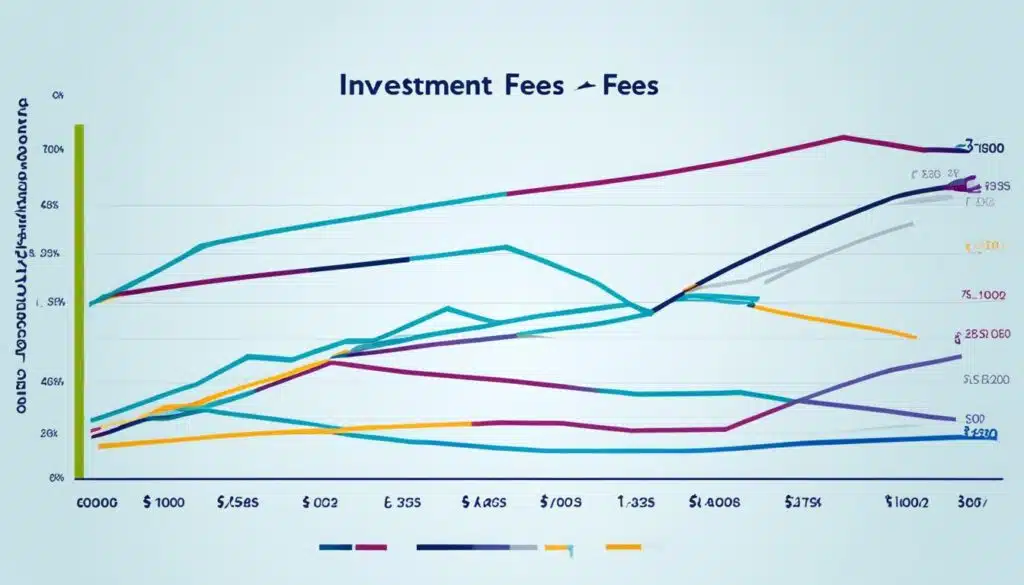How To Invest Money Uk Investing money in the UK can be a smart financial decision that allows you to grow your wealth over time. Whether you’re a beginner or an experienced investor, knowing how to invest money effectively is essential. In this guide, we will explore different investment options and strategies specifically tailored for the UK market, helping you make the most of your hard-earned money.
Investing your money has numerous benefits, from the potential for higher returns compared to traditional savings accounts to the opportunity for capital gains. By investing, you can work towards achieving your financial goals, such as saving for retirement, buying a home, or funding your children’s education.
There are various types of investments available in the UK. One popular option is investing in stocks and shares through an Individual Savings Account (ISA). A stocks and shares ISA allows you to invest in the stock market while enjoying tax advantages. Property investments are also common, providing both rental income and potential capital appreciation.
To get started with investing, you need to open an investment account with a reputable platform. Many online investment platforms offer a wide range of investment options and tools to help you build your investment portfolio. It’s crucial to create an investment plan based on your goals, risk tolerance, and desired investment horizon.
Understanding risk and returns is vital when investing. Different investment options carry varying levels of risk, and it’s essential to assess your risk tolerance and choose investments that align with your comfort level. Remember, while investments can go up in value, they can also go down, and there is no guarantee of returns.
Developing an investment strategy is crucial for long-term success. Diversification, spreading your investments across different asset classes, can reduce risk. Long-term investment options, such as growth investments, can capitalize on market trends and potentially achieve higher returns.
When investing, it’s important to consider associated fees and costs. These can include trading fees, platform fees, and ongoing management charges. Understanding the fees involved helps you evaluate the overall impact on your investment returns and choose cost-effective options.
You don’t need a significant amount of money to start investing in the UK. Many investment platforms allow you to start with as little as £50. Beginning with smaller investments can be a great way to gain experience and gradually increase your investment amounts as you feel more comfortable.
Managing risk through diversification is key. By spreading your investments across different assets and sectors, you can potentially mitigate losses and maintain a more stable overall performance.
Once you’ve started investing, regularly monitoring your investments is crucial. Keep track of their performance and make adjustments as needed. Market conditions and investment trends can change, so staying informed and proactive will help you optimize your investment strategy and achieve better returns.
Investing money in the UK can be a rewarding endeavor with the right knowledge and strategies. By understanding different investment options, managing risks, and being proactive, you can make informed decisions that align with your financial goals. Start investing today and work towards growing your wealth in the UK.
Also Read : How do Stock Trading Platforms Impact Market Accessibility?
Key Takeaways: How To Invest Money Uk
- Investing in the UK can help you grow your wealth over time and achieve your financial goals.
- Various investment options are available, such as stocks and shares ISAs and property investments.
- Open an investment account with a reputable platform and create an investment plan based on your goals and risk tolerance.
- Understand the associated fees and costs when investing.
- You can start investing with small amounts and gradually increase your investments over time.
Why Should You Invest?
Investing your money allows you to potentially earn higher returns compared to keeping it in a savings account. By investing, you can work towards achieving your financial goals, such as saving for retirement, buying a home, or funding your children’s education. Additionally, investing in assets like stocks and shares can provide you with the opportunity for capital gains, where the value of your investment increases over time.
Investing your money provides an excellent opportunity to grow your wealth and secure your financial future. While keeping your money in a savings account may seem like a safe option, the low interest rates offered often fail to keep up with inflation. This means that the value of your savings may decrease over time, reducing your purchasing power.
However, by investing your money, you have the potential to earn higher returns. Successful investments can generate substantial profits, allowing you to increase your initial capital and build significant wealth over time.
Investment Goals
One of the significant advantages of investing is that it enables you to work towards specific financial goals. Whether you’re dreaming of a comfortable retirement, purchasing a home, or funding your children’s education, investing can help you achieve these objectives.
By creating and implementing a well-defined investment plan, you can align your financial goals with various investment opportunities. For example, if your goal is to retire comfortably, you might consider long-term investments that provide steady growth and income over time.
Investing can also provide you with the means to fund significant expenses or milestones, like purchasing a home. By investing your money wisely, you can accumulate the necessary funds to achieve your desired outcome.
Also Read :How Can Beginners Start Their Journey Into Stock Trading?
Capital Gains
One of the key benefits of investing in assets like stocks and shares is the potential for capital gains. When you invest in these assets, you become a part-owner of a company, and as the company grows and becomes more profitable, the value of your investment can increase.
Capital gains occur when you sell your investment for a higher price than what you initially paid for it, allowing you to realize a profit. This profit can be significant, especially if you invest wisely in companies that experience significant growth.
For example, imagine you invest in a tech company’s stock early on, and over time, the company becomes highly successful. The value of your shares may skyrocket, resulting in substantial capital gains if you choose to sell.
It’s important to note that investing involves risks, and the value of your investments can fluctuate. However, by exercising careful research and smart investment decisions, you can enhance the potential for capital gains and maximize your investment returns.
As shown in this image, capital gains can significantly enhance your investment returns, making it a compelling reason to invest your money.
Types of Investments
In the UK, there are various investment options available for those looking to grow their wealth. Two popular choices include stocks and shares ISAs and property investments.
Stocks and Shares ISA: A stocks and shares ISA allows individuals to invest in the stock market while enjoying tax advantages. Essentially, it is a tax-efficient wrapper for your investments, protecting any potential gains from capital gains tax and dividends from income tax. This type of investment allows you to have a diversified portfolio of shares, bonds, and other financial instruments, helping you potentially maximize returns and achieve your investment goals.
Property Investments: Investing in property can provide both rental income and potential capital appreciation over time. Whether it’s residential properties, commercial properties, or real estate investment trusts (REITs), property investments can be a tangible and steady source of income. However, it’s important to carefully consider factors such as property location, market conditions, and potential costs associated with property maintenance and management.
Deciding between a stocks and shares ISA or property investments depends on various factors, including your risk tolerance, investment goals, and personal preferences. Some individuals may prefer the stability and potential long-term growth offered by property investments, while others may prefer the liquidity and flexibility of stocks and shares ISAs.
If you are unsure about which option is best for you, it’s advisable to seek advice from a financial advisor or investment professional who can assess your individual circumstances and provide tailored recommendations.
Also Read : What Are The Effects Of Monetary Policy On Stock Market Trends?
Getting Started with Investing

To start investing in the UK, you need to open an investment account with a reputable investment platform. These online investment platforms offer a wide range of investment options and tools to help you build your investment portfolio. Whether you are interested in stocks, bonds, mutual funds, or other investment vehicles, these platforms provide a convenient way to access the financial markets and manage your investments.
Before diving into the world of investments, it’s important to create an investment plan based on your goals, risk tolerance, and desired investment horizon. Having a well-defined plan will help you stay focused and make informed decisions. Consider factors such as your investment objectives (e.g., capital growth or income generation), time horizon, risk appetite, and the amount of money you are willing to invest.
“The key to successful investing is having a plan and following it.” – Warren Buffett
When creating your investment plan, determine your investment goals. Are you investing for retirement, buying a home, funding your children’s education, or simply looking to grow your wealth? Your goals will dictate your investment strategy and asset allocation.
Next, consider your risk tolerance. Determine how comfortable you are with the ups and downs of the financial markets. Investing inherently involves risks, and different investment options carry varying degrees of risk. It’s essential to find the right balance between risk and reward that aligns with your risk appetite.
Lastly, define your desired investment horizon. Are you investing for the short term, medium term, or long term? Your investment horizon will influence the types of assets you should consider and the level of risk you can tolerate.
By opening an account with a reliable investment platform and creating a well-thought-out investment plan, you will be on your way to building a successful investment portfolio and working towards your financial goals.
Also Read : How Secure Are Money Transfer Card?
Benefits of Online Investment Platforms
Online investment platforms offer numerous advantages for investors in the UK. Here are some key benefits:
- Convenience: With online investment platforms, you can access your investment accounts anytime, anywhere. It eliminates the hassle of visiting a physical branch and allows you to manage your investments at your convenience.
- Wide Range of Investment Options: These platforms provide access to a diverse range of investment options, including stocks, bonds, mutual funds, index funds, exchange-traded funds (ETFs), and more. This allows you to create a well-diversified portfolio tailored to your investment goals.
- Research and Tools: Many online investment platforms offer comprehensive research tools and resources to help you make informed investment decisions. You can access market data, portfolio analysis, investment research reports, and other valuable tools to enhance your investment knowledge.
- Low Costs: Online investment platforms often have lower fees and charges compared to traditional brick-and-mortar financial institutions. This cost-effectiveness can help you maximize your investment returns over the long term.
- Education and Support: These platforms provide educational resources, tutorials, and customer support to assist you throughout your investment journey. Whether you are a beginner or an experienced investor, you can access valuable information and guidance to make informed decisions.
With the convenience, accessibility, and range of investment options offered by online investment platforms, getting started with investing has become easier than ever. Take advantage of these platforms to embark on your investment journey and work towards your financial aspirations.
| Platform | Features | Minimum Investment |
|---|---|---|
| Platform A | Wide range of investment options | £100 |
| Platform B | Robo-advisory services | No minimum |
| Platform C | Social investing and portfolio tracking | £50 |
Understanding Risk and Returns

When it comes to investing, it’s crucial to have a clear understanding of the degree of risk associated with different investment options and the potential return on investment. Each investment avenue carries its own set of risks and rewards, and it’s important to assess these factors before making any investment decisions.
Investments with higher potential returns often come with a higher level of risk. This is because the possibility of earning greater profits usually entails exposing your investment to more uncertainty and volatility. Conversely, investments that offer lower returns generally pose lower risks. It’s vital to carefully evaluate your own risk tolerance and select investments that align with your comfort level and financial goals.
It’s essential to note that investment options can fluctuate in value. While they have the potential to increase your wealth, there is no guarantee of returns. Investments can go down as well as up in value, depending on market conditions and other external factors. It’s important to be prepared for the possibility of losses and consider a long-term investment horizon to weather short-term fluctuations.
“Investing should always be approached with a balanced perspective. Take the time to understand the risks associated with different investment options and strive for a healthy mix of assets in your portfolio.”
To illustrate the varying degrees of risk and potential returns in different investment options, let’s compare two popular choices—stocks and bonds.
| Investment Option | Degree of Risk | Expected Return on Investment |
|---|---|---|
| Stocks | High | Potentially high returns, but also significant volatility |
| Bonds | Low to moderate | Relatively stable returns, but lower potential for growth |
The Role of Diversification in Managing Risk
Diversification is a fundamental strategy for managing risk in your investment portfolio. By spreading your investments across different asset classes, industries, and geographical regions, you can potentially minimize the impact of a single investment’s poor performance on your overall portfolio. Diversification can help balance the risk-reward ratio, ensuring that your portfolio withstands market fluctuations and delivers more consistent long-term returns.
For example, instead of investing all your funds in a single stock or sector, you could diversify by including an allocation of bonds, real estate, or other assets. This would help protect your portfolio from being overly exposed to the performance of a single investment. Remember, there is no one-size-fits-all diversification strategy, and it’s important to tailor your portfolio diversification to your unique circumstances and financial objectives.
By understanding the degree of risk involved in different investment options and balancing it with potential return on investment, you can make informed decisions that maximize your chances of achieving your financial goals. Remember to ensure your investments align with your risk tolerance, regularly review your portfolio’s performance, and seek professional advice when needed.
Also Read :Money Matters: Smart Financial Tips
Investment Strategies

Developing an investment strategy is crucial for long-term success. One effective strategy is diversification, which involves spreading your investments across different asset classes to reduce risk. By diversifying your portfolio, you can potentially protect yourself from the impact of market volatility and optimize your returns.
Long-term investment options are another key consideration. Investing with a long-term perspective allows you to ride out short-term market fluctuations and capture the benefits of compounding returns over time. These options can include stocks, bonds, real estate, and mutual funds that have historically shown the potential for growth.
When pursuing growth investments, you aim to invest in companies or sectors that have a high potential for growth. This can involve researching and identifying industries that are expected to experience significant advancements or have a strong track record of success. While growth investments may carry higher risks, they also offer the opportunity for higher returns.
Example of a Diversification Strategy
Let’s consider an example of how diversification can be implemented in an investment portfolio:
| Asset Class | Allocation |
|---|---|
| Stocks | 40% |
| Bonds | 30% |
| Real Estate | 20% |
| Mutual Funds | 10% |
This table demonstrates how an investor may allocate their portfolio across different asset classes. By diversifying their investments across stocks, bonds, real estate, and mutual funds, the investor spreads their risk and increases the potential for long-term growth.
Remember, it’s essential to regularly review and adjust your investment strategy according to your financial goals, risk tolerance, and market conditions. Consulting with a financial advisor can provide valuable guidance and help you make informed decisions.
Considerations and Costs

When investing, it’s important to consider associated fees and costs. These can include trading or transaction fees, account or platform fees, and ongoing management charges. Understanding the fees involved can help you evaluate the overall impact on your investment returns and choose cost-effective investment options.
Trading or transaction fees are charges incurred when buying or selling investments. These fees can vary depending on the type of investment and the platform or broker used. It’s essential to review the fee structure of different platforms and consider the impact on your investment returns.
Account or platform fees are charges levied by investment platforms for providing access to their services. These fees can be in the form of a flat fee or a percentage of your investment value. It’s important to compare platforms and evaluate the services offered to ensure you’re getting value for your money.
Ongoing management charges are fees associated with the professional management of certain types of investments, such as mutual funds or exchange-traded funds (ETFs). These charges cover the cost of portfolio management and administration. It’s crucial to understand the potential impact of these charges on your investment returns and assess whether the level of management justifies the cost.
Reducing Costs and Maximizing Returns
While fees and costs are inevitable in investing, there are strategies to minimize their impact and maximize your returns. Here are a few tips:
- Compare investment platforms: Different platforms offer different fee structures. By comparing and choosing platforms with competitive fees, you can minimize costs.
- Consider low-cost investment options: Look for low-cost investment vehicles such as index funds or ETFs that track broad market indices. These options often have lower fees compared to actively managed funds.
- Optimize your investment portfolio: Regularly review your investment portfolio to ensure it aligns with your goals and risk tolerance. By periodically rebalancing and eliminating underperforming investments, you can optimize returns and reduce unnecessary costs.
Remember, while fees and costs are essential considerations, they should not be the sole determining factor in your investment decisions. It’s crucial to assess the overall value proposition of an investment and consider factors such as historical performance, market conditions, and your individual investment goals.
Also Read : How Does Motorbike Finance Work?
Starting with Small Investments

You don’t need a large sum of money to start investing in the UK. Many investment platforms allow you to start with as little as £50. Starting small can be a great way to dip your toes into the investment world and gain experience. As you become more comfortable and confident, you can consider gradually increasing your investment amounts.
Investing with little money is a viable option for those who want to enter the world of investing but have limited funds. It provides an opportunity to learn about different investment vehicles and strategies while mitigating the risk associated with larger investments.
Investing small amounts allows you to start building your investment portfolio and diversify your holdings. By starting early, even with little money, you can take advantage of compounding returns over time, potentially growing your initial investment into a substantial sum.
To get started with small investments, you can choose from a variety of investment options, such as:
- Exchange-Traded Funds (ETFs): These are investment funds traded on stock exchanges, typically consisting of a diversified portfolio of assets.
- Index Funds: These funds aim to replicate the performance of a specific stock market index, providing broad market exposure.
- Digital Platforms: Online investment platforms have made it easier than ever to start investing with small amounts of money. These platforms often offer a range of investment options and tools to help you make informed decisions.
By investing small amounts regularly, you can take advantage of pound-cost averaging. This strategy involves investing a fixed amount on a consistent basis, regardless of market conditions. As prices fluctuate, you automatically purchase more shares when prices are low and fewer shares when prices are high, potentially reducing the impact of market volatility on your overall investment performance.
“The stock market is filled with individuals who know the price of everything, but the value of nothing.” – Philip Fisher
Regardless of the amount you start investing with, it’s important to have a clear investment plan and strategy. Define your investment goals, time horizon, and risk tolerance. Consider consulting with a financial advisor who can provide personalized guidance tailored to your specific financial situation.
| Investment Option | Risk Level | Potential Returns |
|---|---|---|
| Exchange-Traded Funds (ETFs) | Medium | Varies depending on asset allocation |
| Index Funds | Low | Similar to the performance of the underlying index |
| Digital Platforms | Low to medium | Depends on the investment options chosen |
Remember, investing with little money is just the beginning. As you gain confidence and knowledge, you can gradually increase your investment amounts and explore more advanced investment strategies. The key is to start early and stay consistent, allowing time and compounding to work in your favor.
Risk Management and Diversification

Investing in the financial market is not without risks. However, by implementing effective risk management strategies, you can mitigate potential losses and protect your investment portfolio. One of the key methods to achieve this is through diversification.
Diversification involves spreading your investments across different assets and sectors, reducing the impact of any single investment’s poor performance. By diversifying, you can potentially safeguard against significant losses that may occur in specific investments or sectors, maintaining a more stable overall performance.
When building your investment portfolio, consider allocating your funds across various types of investments, such as stocks, bonds, real estate, and commodities. Additionally, within each asset class, spread your investments across different industries or sectors, such as technology, healthcare, or consumer goods. This way, any downturn in a particular industry will have a limited impact on your overall portfolio.
“Diversification is a way to protect against ignorance. It makes little sense if you know what you are doing.” – Warren Buffett
Benefits of Diversification
Diversifying your investment portfolio offers several advantages:
- Reduced Risk: By spreading your investments, you decrease the reliance on any single investment, minimizing the impact of poor performance.
- Enhanced Stability: Diversification helps maintain a stable overall portfolio performance, as losses in one investment may be offset by gains in another.
- Capital Preservation: By investing in different assets, you can protect your capital from significant erosion caused by market volatility.
- Potential for Growth: Diversification allows you to invest in different asset classes that have the potential for growth, ensuring exposure to different market opportunities.
Diversification Tips
While diversification offers numerous benefits, it’s important to keep a few key considerations in mind:
- Conduct thorough research on different investment options to ensure they align with your risk appetite and investment goals.
- Regularly review and rebalance your portfolio to maintain the desired asset allocation and diversification ratio.
- Seek professional advice from financial advisors or wealth managers to develop a well-rounded investment strategy.
Remember, diversification is not a guarantee against losses, but it can play a crucial role in managing risk and increasing the stability of your investment portfolio.
| Asset Class | Distribution |
|---|---|
| Stocks | 50% |
| Bonds | 30% |
| Real Estate | 10% |
| Commodities | 10% |
Monitoring and Adjusting Your Investments

Once you’ve started investing, it’s crucial to regularly monitor the performance of your investments. Monitoring allows you to stay informed about their progress and make informed decisions. Market conditions and investment trends can change over time, so it’s essential to proactively adjust your investments as needed.
**Investment performance** can be influenced by various factors, including economic indicators, industry developments, and geopolitical events. By keeping a watchful eye on your investments, you can capitalize on opportunities and mitigate potential risks.
Monitoring your investments involves assessing their performance against your **investment goals**. Review important metrics such as returns, growth, and income generated. If your investments are not meeting your expectations, it might be time to reevaluate your investment strategy.
**Monitoring and adjusting your investments** also require considering external factors that can affect your portfolio. Stay updated with **market news** and industry analysis to gain valuable insights that can influence your investment decisions.
Adjusting your investments doesn’t mean constant buying and selling. It involves making strategic changes to your portfolio based on careful analysis and market conditions. When one investment underperforms, you might consider reallocating funds to other assets that offer better potential returns.
Remember, well-managed investments are like plants that need regular watering and occasional pruning to grow strong and healthy.
Developing a systematic investment review process will help you stay organized and make the necessary adjustments. Set a schedule to evaluate your investments at intervals that align with your investment objectives and risk tolerance.
To summarize, monitoring and adjusting your investments is an ongoing process that keeps you informed and maximizes the potential for returns. By regularly evaluating your investments and staying proactive, you’ll be better positioned to navigate changing market conditions and optimize your investment performance.
| Benefits of Monitoring and Adjusting Investments: | Key Considerations: |
|---|---|
| 1. Optimizes investment performance | 1. Set a monitoring schedule |
| 2. Capitalizes on market opportunities | 2. Review investment performance metrics |
| 3. Mitigates potential risks | 3. Stay informed about market news and trends |
| 4. Aligns investments with goals | 4. Make strategic adjustments based on careful analysis |
| 5. Maximizes returns over time | 5. Consider professional advice, if needed |
Six ways to invest with little money
Here are six ways to invest with little money:
- Micro-Investing Apps: Use apps like Acorns or Stash to invest small amounts regularly.
- Robo-Advisors: Opt for automated investment platforms like Betterment or Wealthfront, which often have low minimum investment requirements.
- Fractional Shares: Invest in partial shares of stocks or ETFs through platforms like Robinhood or Charles Schwab.
- Dividend Reinvestment Plans (DRIPs): Reinvest dividends from stocks to buy more shares without additional fees.
- High-Yield Savings Accounts: Park your money in savings accounts with higher interest rates to earn passive income.
- Peer-to-Peer Lending: Invest in loans to individuals or small businesses through platforms like LendingClub or Prosper.
Apply for savings accounts with Raisin UK
Apply for savings accounts with Raisin UK to maximize your returns. Raisin UK offers access to a wide range of savings accounts from various partner banks across Europe. By opening an account through Raisin UK, you can benefit from competitive interest rates and diversify your savings portfolio. With easy online access and simple application processes, Raisin UK makes it convenient to manage your savings efficiently. Start earning more on your savings today by exploring the savings account options available through Raisin UK.
Investing for beginners course: module one
Module One of the Investing for Beginners course covers foundational concepts such as understanding investment goals, risk tolerance assessment, and basic investment principles. Participants learn about different asset classes, including stocks, bonds, and mutual funds, and how to allocate assets based on their risk profiles. The module also introduces key investment terms and terminology to build a solid understanding of the investment landscape. Through interactive lessons and practical examples, Module One provides beginners with the necessary knowledge to start their investment journey confidently. Join the course today to kickstart your investment education and build a strong financial future.
Also Read: Get Smart With Money Mail: Optimize Your Finances
Conclusion
Investing money in the UK can lead to significant growth in your wealth when approached with the right knowledge and strategies. By understanding the various investment options available, effectively managing risks, and staying informed about market trends, you can make informed decisions that align with your financial goals. Regularly reviewing your investments and adapting to market changes is essential for maximizing returns. If needed, seek professional advice to ensure you make the most of your investment journey.
Start investing today and work towards growing your wealth in the UK. Remember that investing is a long-term commitment, so it’s important to stay patient and focused on your investment goals. With diligence and a well-thought-out investment plan, you can build a strong investment portfolio that serves you well in the years to come. Take control of your financial future and make the most of the opportunities available to you.
In conclusion, the UK offers a diverse range of investment opportunities for individuals looking to put their money to work. Whether you choose stocks and shares, property investments, or other investment vehicles, understanding the risks and potential returns is crucial. Always stay informed, review your investments regularly, and adapt your strategy as needed. Investing in the UK can be a rewarding journey that allows you to grow your wealth and achieve your financial goals over time.
FAQs
Q: What are some beginner-friendly ways to invest money in the UK?
A: When investing for beginners in the UK, you can consider options such as savings accounts, stocks and shares ISAs, cash ISAs, or investing in a beginner-friendly course to learn more about investment strategies.
Q: What is the best way to invest money with little capital in the UK?
A: Investing with little money in the UK can be done through options like low-cost investment platforms, index funds, or starting with a small amount in a savings account or a beginner-friendly investment product.
Q: What are the best places to put your money for UK investments?
A: The best places to invest money in the UK depend on your individual circumstances and risk tolerance. Consider factors like fund managers, available products, the UK regulatory regime, and the potential for growth or income.
Q: What are some key considerations for beginners when investing in the UK?
A: Beginners investing in the UK should understand that investments carry risk, the importance of diversification, the possibility of losing money, and the impact of factors like taxes and market changes on their investments.
Q: How can I start investing for beginners with little as £1 in the UK?
A: You can start investing with as little as £1 in the UK by exploring micro-investment apps, fractional shares platforms, or automated investment services that allow you to invest small amounts regularly.
Q: What are some of the best investment options for UK residents looking to grow their money?
A: UK residents can explore various investment options such as stocks and shares ISAs, index funds, bonds, property investments, or peer-to-peer lending to potentially grow their money over time.
Q: Is it possible to invest money in the UK without risking losing all of it?
A: While all investments carry a varying degree of risk, you can minimize the risk of losing all your money by diversifying your investment portfolio, seeking professional advice, and choosing investment products that align with your risk tolerance and financial goals.









